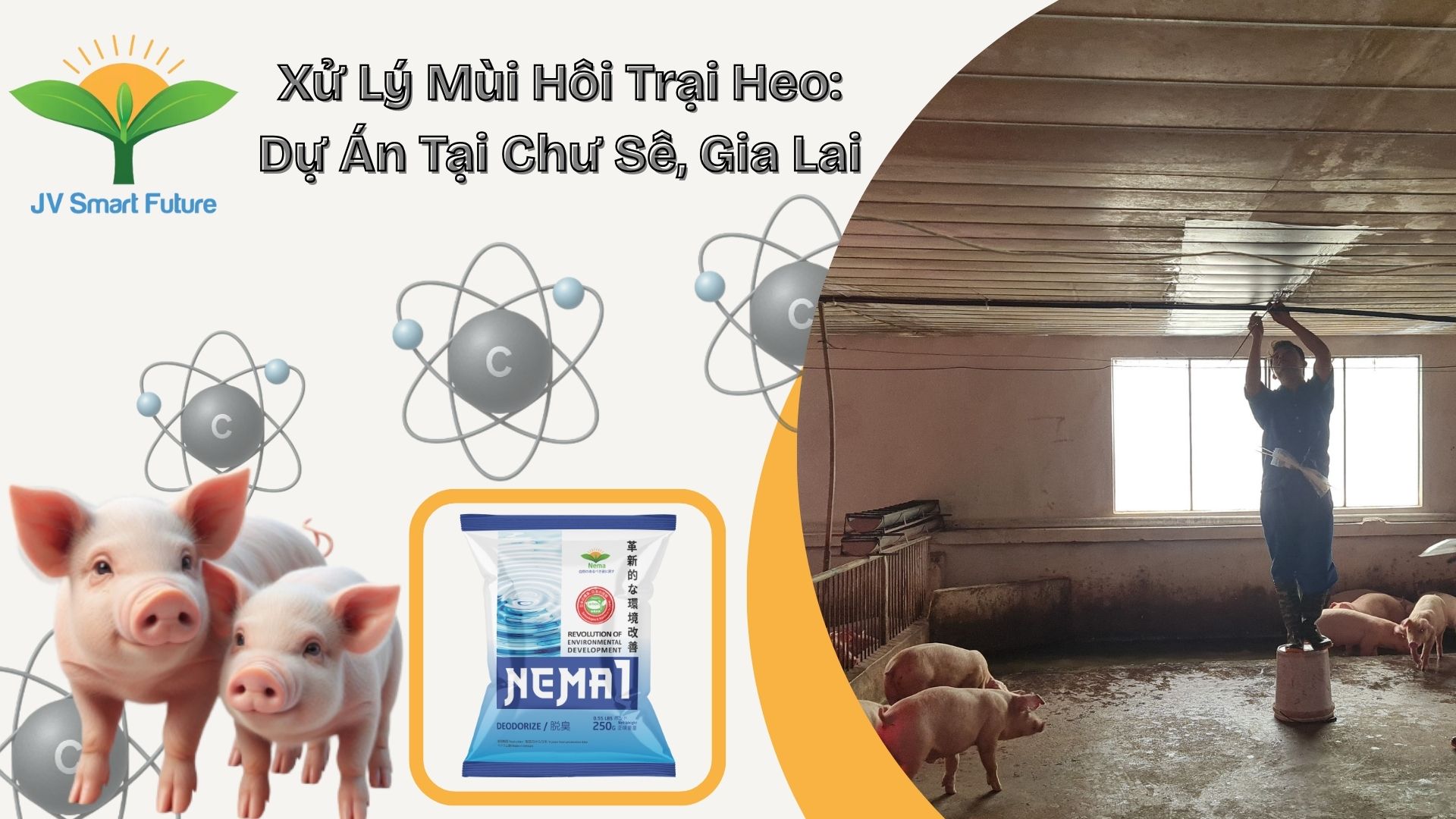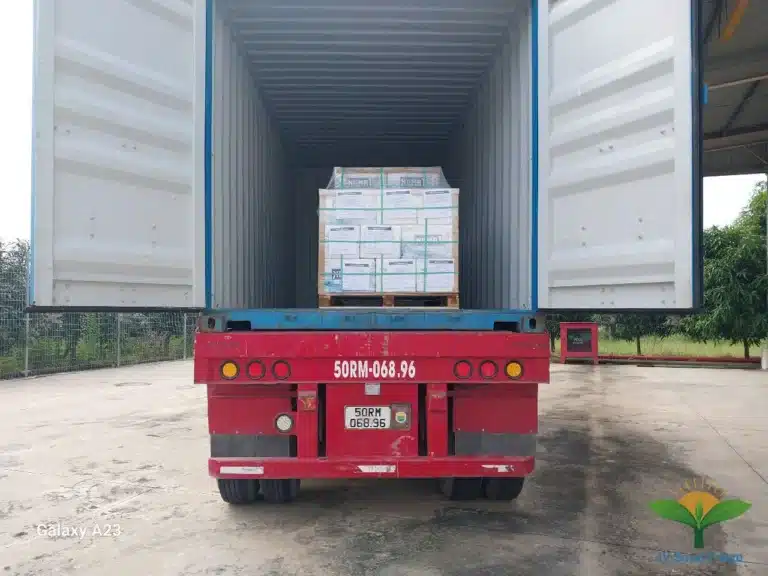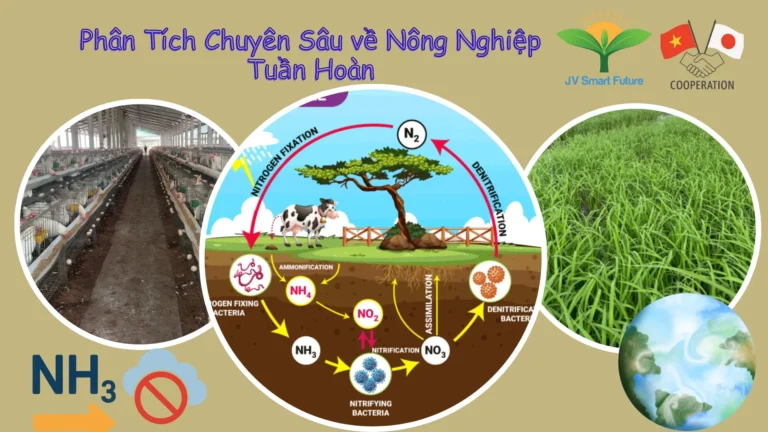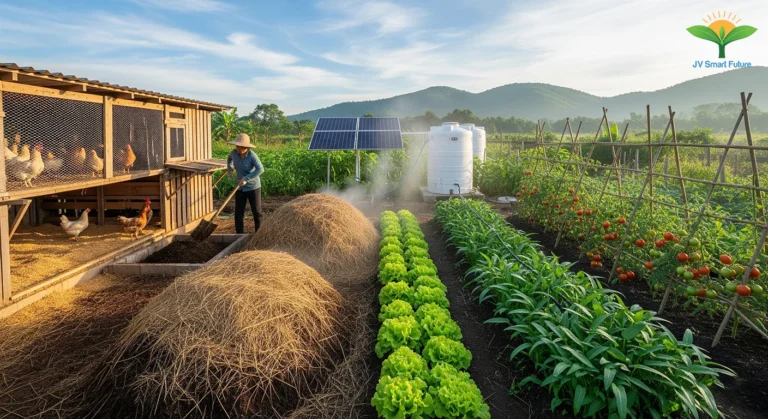Pig Farm Odor Control: A Case Study on Sustainable Farming
Table of Contents
Part 1: Odor Control Project at Chu Se Farm, Gia Lai: Solving the Sustainable Development Challenge
Introduction to Chu Se Farm
Located in Chu Se district, Gia Lai province, the farm is a modern meat pig production facility of a significant scale. The farm consists of 4 closed-system houses, each measuring 80×18 meters and housing approximately 1,200 pigs. The total capacity of the farm reaches 4,500 meat pigs per cycle, making it a crucial link in the region’s food supply chain.
However, the farm’s location presents a core and sensitive challenge: it is situated to the northeast and only about 400-500 meters from a residential area. This distance, while compliant with some planning regulations, is still too close to ignore the issue of odor control. Any failure in the waste treatment system could lead to odors spreading directly to households, severely affecting daily life and increasing the risk of community conflict. This geographical position acted as a powerful catalyst, compelling the farm’s management to seek a superior odor control technology solution—one that not only meets legal standards but also achieves social acceptance.
The Investor’s Vision for Odor Control
Facing this challenge, the management of Chu Se Farm demonstrated a strategic vision and a high sense of responsibility. Instead of waiting for complaints from residents, they proactively sought an advanced odor control solution. This decision was not a passive reaction but a strategic move aligned with their sustainable development goals. The objective was not just to treat odors but to build a modern farming model that harmonizes economic efficiency with environmental and community responsibility. This vision included protecting the health of their own livestock and creating a safe working environment for their employees.
Identifying the Main Odor Sources
Through on-site surveys and operational analysis, the technical team precisely identified the primary sources of odor that required treatment. The most pungent odors originated from the barns housing larger pigs, specifically those weighing from 15 kg until they were ready for market. At this stage, the volume of waste produced is at its highest, leading to a sharp increase in the concentration of harmful gases like $NH_3$ and $H_2S$. Accurately identifying this “hotspot” allowed the farm to implement a targeted odor control solution, concentrating resources on the most heavily polluted area, thereby optimizing both efficiency and investment costs.
Part 2: JVSF’s Breakthrough Odor Control Technology: Automated Rain Spray System and Organic Carbon NEMA1
To definitively solve the odor problem at Chu Se Farm, JVSF designed and installed a comprehensive treatment system, combining automation technology with the advanced treatment material, Organic Carbon NEMA1.
System Design and Structure
The system installed at Chu Se is a centralized, efficient, and easy-to-operate solution. All 4 barns are served by a single central system, comprising the following main components:
- Central Storage Tank: Used to mix the Organic Carbon NEMA1 solution with water.
- High-Pressure Pump: Ensures sufficient water pressure to distribute the solution to all spray points across the 4 barns.
- Industrial Control Panel: The brain of the system, allowing for programming and complete automation of the spraying process.
- Piping and Rain Spray Nozzle System: A network of pipes designed to deliver the solution to each pen, ending in specialized rain spray nozzles.
A key differentiator of this odor control technology is the “rain spray” principle instead of “mist spray.” The system creates larger water droplets that fall quickly to the barn floor. This design offers a significant advantage: it does not increase the humidity inside the barn, thereby avoiding the risk of respiratory diseases in pigs, a common problem with traditional misting systems.
The system operates fully automatically. The only manual task required of the operator is to periodically mix the product in the storage tank. The control panel automatically executes spray cycles according to a preset schedule, typically involving very short sprays of only 1-2 minutes each, repeated 3-4 times per day. This flexible operating mode optimizes odor treatment efficiency and conserves resources.
The Scientific Mechanism of Organic Carbon NEMA1
The power of the system lies in the active ingredient, Organic Carbon NEMA1. This is not a microbial or odor-masking chemical, but an advanced organic material that works at the molecular level to eliminate odors at their source.
- Instant Action: As soon as the solution containing Organic Carbon is sprayed onto the waste surface, atomic-level carbon particles quickly make contact, adsorb, and break the bonds of odorous gas molecules like $H_2S$ and $NH_3$. This process is nearly instantaneous, preventing these toxic gases from evaporating and diffusing into the air.
- Dual Effect: In addition to its direct deodorizing capability, Organic Carbon creates a favorable environment that supports the growth of beneficial microorganisms already present in the waste. These microbes then accelerate the decomposition and composting of manure right in the barn. This creates a “dual effect”: treating odors at the source while also pre-treating the waste, which reduces the load on and increases the efficiency of downstream treatment stages like biogas digesters.
Comprehensive Benefits and Proof of Effectiveness
The implementation of JVSF’s solution at Chu Se Farm has delivered a comprehensive value chain, turning an investment in odor control into a strategy for enhancing business performance.
- Superior Effectiveness: The system completely eliminates odors at the source, resulting in a fresh atmosphere throughout the entire farm. This directly helps to REDUCE respiratory diseases and improve the overall health of the pig herd, thereby increasing productivity.
- Economic Optimization: Operating costs are controlled at a reasonable level, estimated at an average of only about 12,000 VND per meat pig per farming cycle (5 months). The fully automated system eliminates labor costs for operation. The short-pulse spray mode (1-2 minutes/spray) also results in significant water savings.
- Absolute Safety: Organic Carbon NEMA1 is an organic product, completely safe for livestock, humans, and the environment. The system is designed to spray only onto the part of the barn floor where waste is concentrated, without affecting the pigs or their feed troughs.
- Value Chain Integration: The pre-treatment of waste directly in the barn has created a closed-loop and effective waste management cycle. Faster manure decomposition helps the biogas digester operate more stably, producing more gas and reducing sludge buildup. This odor control solution has transformed waste from a costly “liability” into a value-generating “asset.”
Part 3: Real-World Results and the Future of Sustainable Pig Farming
Evidence of Success at Chu Se
The success of the project at Chu Se Farm is clearly demonstrated by the “before and after” change once the system became operational. Previously, odor was a constant problem, affecting the working environment and posing a potential nuisance to the nearby residential area. After installing the automated rain spray system using Organic Carbon NEMA1, the air quality in and around the farm improved dramatically. The characteristic odor of a pig farm was almost completely eliminated, definitively resolving the issue of community impact and helping the farm fulfill its commitment to sustainable development.
Introductory video on the application of Organic Carbon for pig farms:
Scaling the Model
The success at Chu Se is not an isolated case but a prime example of the effectiveness and wide applicability of JVSF’s technology. This model has been and continues to be successfully implemented at many other large-scale pig farms across Vietnam. Notable projects include those at Anh Hy farm (Tay Ninh), Anh Sang farm (Quang Ngai), and contract farms for C.P. in Phu Yen. The consistent success across various regions, with different climatic conditions and scales, has confirmed that odor control technology using Organic Carbon is a reliable, effective, and field-proven solution.
Conclusion
The problem of odor in pig farming is no longer an insurmountable challenge. The case study at Chu Se Farm in Gia Lai has proven that with the right approach and appropriate technology, businesses can completely solve this issue while reaping numerous economic and environmental benefits.
Investing in JVSF’s automated rain spray system and Organic Carbon NEMA1 is not merely an expense for regulatory compliance. It is a strategic investment that offers a dual benefit: it definitively resolves environmental and social risks while directly improving the health and productivity of the livestock, optimizing the entire waste-to-value chain. This is the path toward a modern, responsible, sustainable, and highly profitable model of pig farming.
Farm owners and investors in the livestock industry who are seeking a definitive and effective odor control solution are encouraged to contact JVSF for detailed consultation on the technology and solutions best suited to their farm’s scale and specific needs.
Information & References
Contact Information – JV Smart Future Joint Stock Company (JVSF)
Website: https://jvsf.vn/
Address: SH06-SH07, Opal Building, Saigon Pearl, 92 Nguyen Huu Canh, Ward 22, Binh Thanh District, Ho Chi Minh City.
Hotline: (+84) 945.306.068.
Environmental Treatment Product: Organic Carbon NEMA1
Learn more about the product used in this project. See details here.
Proven Effectiveness
Read the Tay Ninh newspaper article about the effective application of Organic Carbon technology. Read here.


















